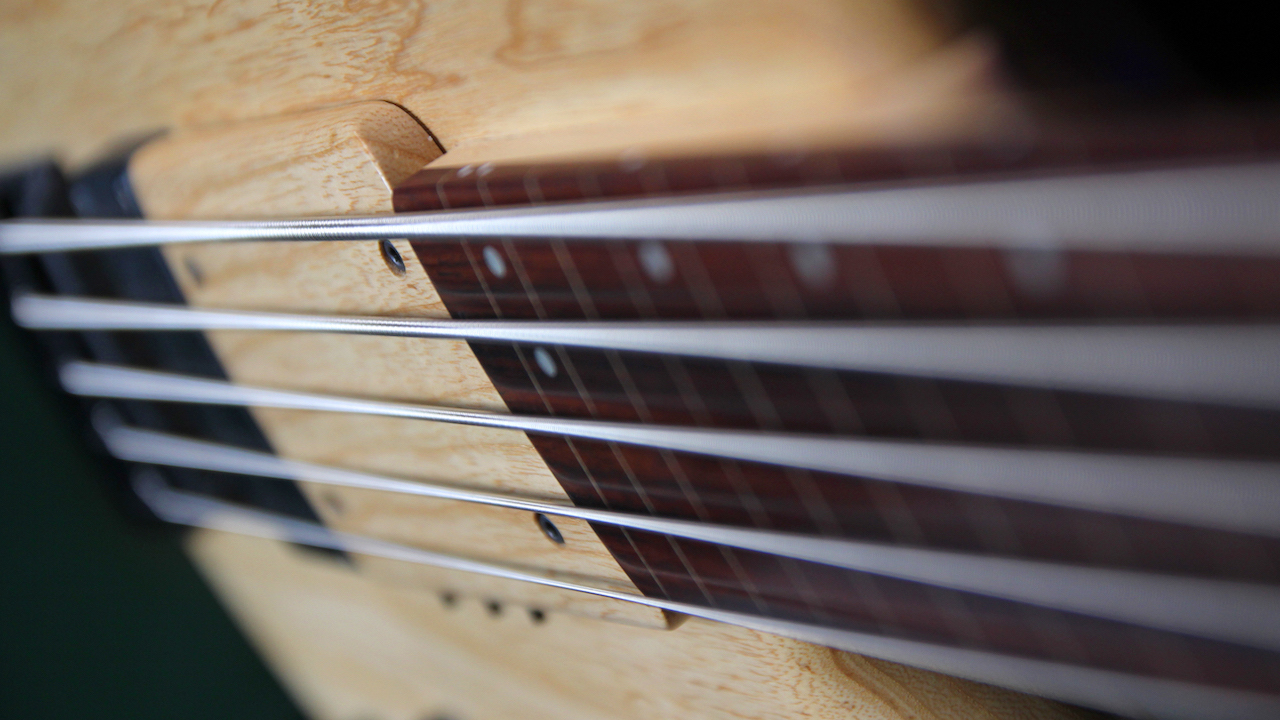“On the fretted bass we call it the slap stopper!” What is a finger ramp and why should you use one?
Bass guru Gary Willis explains the origins of his signature ramp

Gary Willis has arguably done more to refine and advance the language of modern bass playing than any other bassist playing today. Famous for a unique three-finger picking style and an effortlessly light touch, Gary is also a self-confessed ‘hacker’ when it comes to guitar mods. “I expect that I’m one of the most particular players around when it comes to how a bass guitar sets up and plays,” he told BP. “So I’ve always happily made modifications to my basses, including a finger ramp I developed that sits under the strings.”
A finger ramp, which is a feature on Gary’s Ibanez signature model, is a block of wood shaped to fit between the pickups and provide a uniform feel as you shift your playing position. “It’s really designed to eliminate the possibility of grabbing too much string and playing too hard," said Gary. "It also provides a comfortable place for your thumb. On the fretted bass we call it the slap stopper!”
Each of Gary’s Ibanez basses comes with a standard setup, but every player can alter the height of the ramp based on their individual choice. "These kind of details are peculiar to me and not the kind of thing the rest of the bass world would necessarily notice, but you can remove it if you really hate it!"
Luckily for us, Gary has never been precious about the origins of his ideas. "It all started back in the early '80s when I put two DiMarzio Jazz Bass pickups side-by-side. I didn’t like the sound, but I liked the feel underneath my fingers. It worked really well for my three finger technique. The next bass I got, I fashioned a contoured piece of wood next to the back pickup. Eventually I stopped using a front pickup so it expanded to reach all the way to the edge of the fingerboard."

While Gary doesn’t claim sole credit for this particular innovation, his thirst for self-improvement has set many players on the same path. "I can’t take exclusive credit for inventing the ramp since I’ve heard of other people developing it independent of me, but I’m glad to see players developing an awareness of dynamics and touch and using the ramp to help with that."
Matt Garrison, who also has a ramp on all of his signature basses, was the first to bring the concept to Fodera having tried one of Gary’s signature models at the 1994 NAMM Show. “I was at a trade show and Gary Willis let me play his bass,” Matt told BP. “I knew immediately that I had to use the same ramp idea on my Fodera, but instead of placing it at the end of the fingerboard, we placed the ramp in between the pickups. That allows you the opportunity to pluck, if you like to use slapping and plucking techniques.”
In typical polymath style, Gary later incorporated some additional functionality into his ramp design. “I hacked three of the controls that are normally on the Roland V-Bass system, two that you can normally assign to preset up and down, and a volume control which can also be assigned as a switch, depending on if it goes beyond halfway, so those are now set to control ‘scenes’ in Ableton Live.”
All the latest guitar news, interviews, lessons, reviews, deals and more, direct to your inbox!
To find out more about the Ibanez GWB visit ibanez.com


Nick Wells was the Editor of Bass Guitar magazine from 2009 to 2011, before making strides into the world of Artist Relations with Sheldon Dingwall and Dingwall Guitars. He's also the producer of bass-centric documentaries, Walking the Changes and Beneath the Bassline, as well as Production Manager and Artist Liaison for ScottsBassLessons. In his free time, you'll find him jumping around his bedroom to Kool & The Gang while hammering the life out of his P-Bass.


